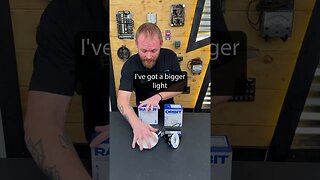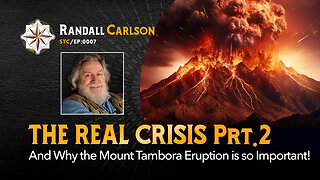BEST OF CODE TIME 4: Grounding and Bonding, Junction Box Covers and Securing and Supporting MC Cable
Let’s face it. The NEC code book is BIG and has tons of articles in it! And we need to have a good understanding of those codes and articles to be able to perform our jobs. In the latest episode of Electrician U, Dustin dives back into the NEC code book to discuss a few of these with us.
🤘⚡️MEMBERSHIP⚡️🤘
JOIN ELECTRICIAN U - become a member and get:
FREE Continuing Education every year
FREE Practice Exams
FREE Monthly Video Courses
FREE Weekly Live Instructor-Led Classes
FREE Monthly Educational Newsletter
Premium Members-Only Content
Private Discord Channel
Monthly Members-Only Discord Chats
Sign up here --- https://www.electricianu.com/electrician-u-membership/
🎧🎹MUSIC AND VIDEO:🎹🎧
https://www.facebook.com/descantmv
🎬✍️ART AND ILLUSTRATION:✍️🎬
https://www.daverussoart.com
For our first topic, we will be discussing grounding and bonding. Are we allowed to use the conduit as the ground path? Say we had some air handlers that used the EMT conduit as the ground path and did not pull a specific grounding wire. On the same project, GRC was used for the outdoor units. What does the NEC code say about this. Article 250 of the NEC governs grounding and bonding and part 6 discusses types of grounding conductors allowed. Article 250.118 states “The equipment grounding conductor run WITH or ENCLOSING the circuit conductors shall be one or more or a combination of the following”. In that article, it goes on to list all the items we are allowed to use, which include copper/aluminum/copper-clad aluminum conductors, Rigid Metal Conduit, and Electrical Metallic Tubing. So, the NEC does in fact allow some types of conduits to be used as the equipment grounding conductors provided your couplings are tight and that a good continuous electrical pathway is achieved. Having said that, make sure and check your project specifications as many projects require you to install a separate equipment grounding conductor be installed with the other conductors to a piece of equipment. There are issues that can arise from using just the conduit as the equipment grounding conductor. Over time, couplings can become loose if not installed properly, pathways/wiring methods can change if places are remodeled, etc. and you can sometimes lose that continuous electrical pathway, hence the reason that most jobs these days require a separate equipment grounding conductor.
Next, are we required to close the cover of a junction box after working in it? Article 314.25 states in part “In completed installations, each box shall HAVE a cover, faceplate, lamp holder, or luminaire canopy”. This tells us that the box shall be PROVIDED with some type of cover but doesn’t specifically say it has to be INSTALLED or the box itself CLOSED with the cover. Where your voltage gets over 1000 volts, the language of the NEC code DOES change to include closing the boxes up. Always make sure and check with your local AHJ (inspector usually) and project specifications as there may be local codes or project specific requirements that may specifically state that the lower voltage range of electrical boxes be CLOSED in finished installations.
Are we allowed to use STAPLES to support MC Cable? While many electricians would argue that you cannot use staples but rather one-hole straps, some type of Caddy strap, etc. Article 330.30 covers securing and supporting of MC Cable. In 330.30(A) it states “Type MC cable shall be supported and secured by staples: cable ties listed and identified for securement and support; straps, hangers, or similar fittings; or other approved means designed and installed so as not to damage the cable”. So, staples ARE in fact allowed to be used to support MC Cable if you do not damage the cable and follow the supporting and securing code references. Zip ties may even be used if they are listed and identified to be used as such. Once again, check with your local AHJ to make sure they will accept that in your local jurisdiction.
We hope this has been helpful in understanding a few of the many code articles in the NEC. Is there a topic you would like to see a video on? Leave a comment in the comment section and let us know. Please continue to follow Dustin and Electrician U as we are constantly updating our content to help our followers become the best electricians they can be!
-
 0:50
0:50
Electrician U
5 months agoWhat Are Lumens?
11.6K4 -
 9:39
9:39
Tactical Advisor
1 day agoHow To Improve Your Shooting For FREE! Mantis Blackbeard X
70.2K13 -
 1:00:59
1:00:59
Squaring The Circle w/ Randall Carlson
1 day ago#007 The Real Climate Crisis Noone Is Talking About and Mount Tambora Pt 2
67.3K17 -
 13:52
13:52
America Uncovered
1 day agoEveryone is WRONG About Trump's Guilty Verdict
53.8K91 -
 13:10
13:10
Censored TV
1 day agoThe Owen Benjamin vs Jim Goad debate was WILD
60.9K38 -
 25:27
25:27
Degenerate Plays
20 hours agoThe Microtransaction Master - Call Of Duty Modern Warfare Remastered : Part 3
59.5K4 -
 21:03
21:03
MYLUNCHBREAK CHANNEL PAGE
23 hours agoOld World Minnesota?
64.1K35 -
 5:49:05
5:49:05
Akademiks
1 day agoDrake Next Move - Whats next?? Did Lil Baby Listen to Me? Diddy and Family Preparing for Indictment?
122K57 -
 1:56:06
1:56:06
TimcastIRL
1 day agoTrump Raises RECORD $52.8 MILLION In One Day, Bonus Uncensored Show w/Laura Loomer | Timcast IRL
137K524 -
 23:19
23:19
Scammer Payback
5 days agoWe Created the First Ever 𝗔𝗡𝗧𝗜-𝗦𝗖𝗔𝗠 Call Center
234K273